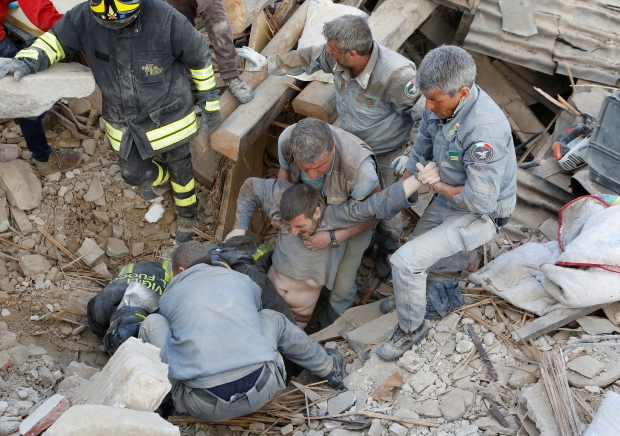Italy’s most powerful earthquake in 36 years has left more than 15,000 people homeless, authorities said Monday as the scale of the damage done to irreplaceable historic buildings became apparent.
Although Sunday’s 6.6-magnitude tremor did not result in any deaths, the third powerful quake in just over two months has left thousands of homes in ruins or structurally unsafe and emptied a string of villages and small towns across the country’s mountainous central regions.
The majority of residents of the devastated communities have taken refuge with friends and family as they anxiously await a green light to return to their homes.
But the national civil protection agency said Monday it was providing assistance to 15,000 people affected by Sunday’s quake, which was so powerful it caused cracks in buildings in Rome, some 120 kilometres (75 miles) away from the epicentre near the Umbrian town of Norcia.
Some 4,000 people from the worst-hit area around Norcia have been sent to hotels on the Adriatic coast with another 500 taken by bus to the inland Lake Trasimeno.
More than 10,000 are being put up in converted sports halls and other temporary facilities, including tents, across Umbria and the neighbouring Marche region, the agency said.
A further 1,100 people are still in Adriatic coast hotels as a result of the August 24 Amatrice earthquake, which left nearly 300 dead.
Prime Minister Matteo Renzi on Monday said that shipping containers would be brought in as temporary housing.
In a statement released late on Monday, the government said it had decided to allocate an immediate 40 million euros ($44 million) to cover the initial costs of the latest quake.
Meanwhile, schools in Rome were closed all day for structural checks and there was traffic chaos in the east of the capital because of the closure of a key flyover for assessment by engineers.
The quake was Italy’s biggest since a 6.9-magnitude one struck the south of the country in 1980, leaving 3,000 people dead.
It has been followed by hundreds of powerful aftershocks feared to have further compromised the safety of buildings in the affected area.
Seismologists have said that the source of the shaking is from a series of faults in the Apennines, and they could not rule out more, possibly stronger quakes in the near future.
“It is normal for the Apennines,” said the president of Italy’s National Institute for Geophysics and Vulcanology, Carlo Doglioni. He cited a similar sequence of three events within a period of months in 1703 in the region.
Source: Websites




